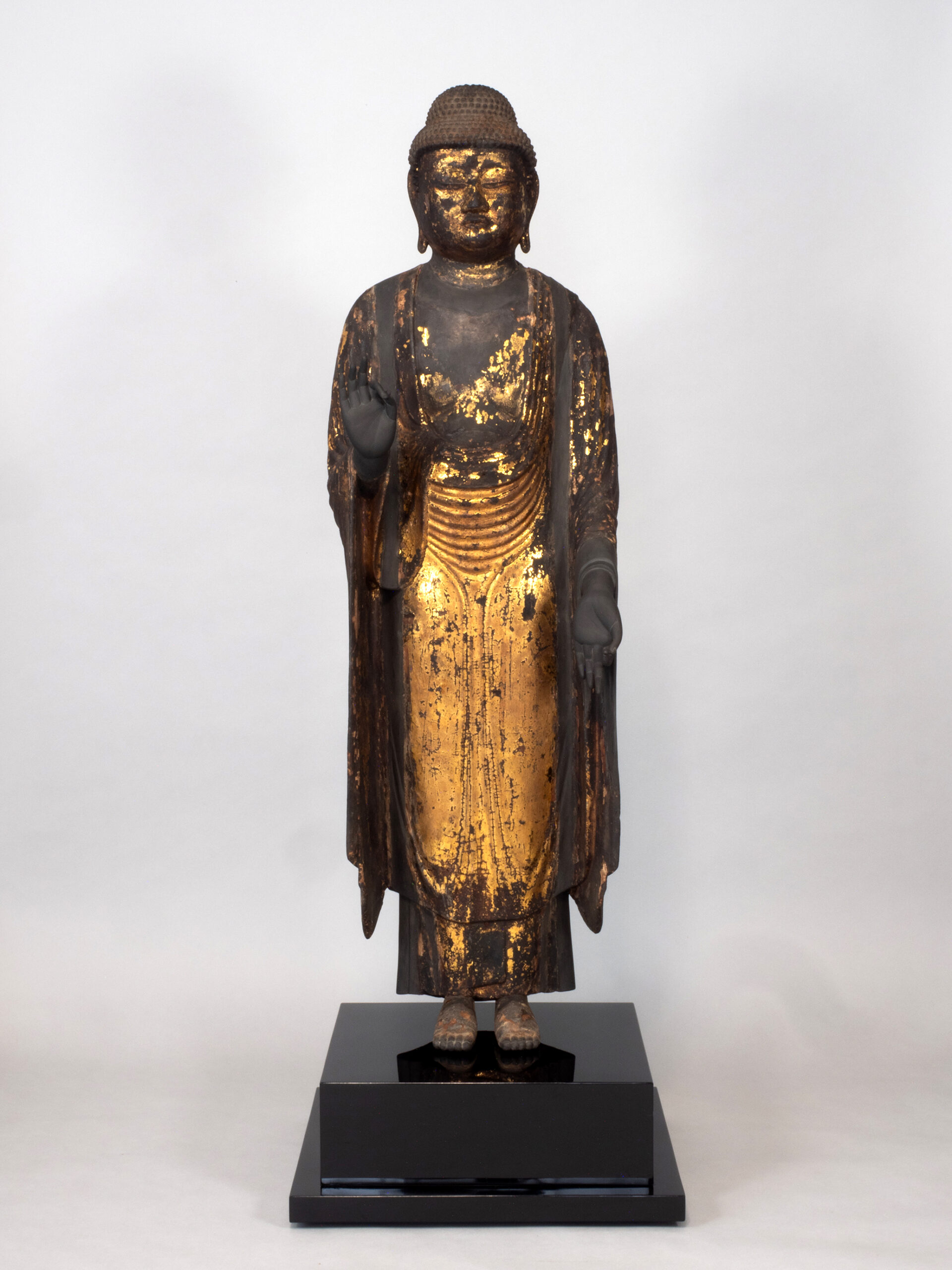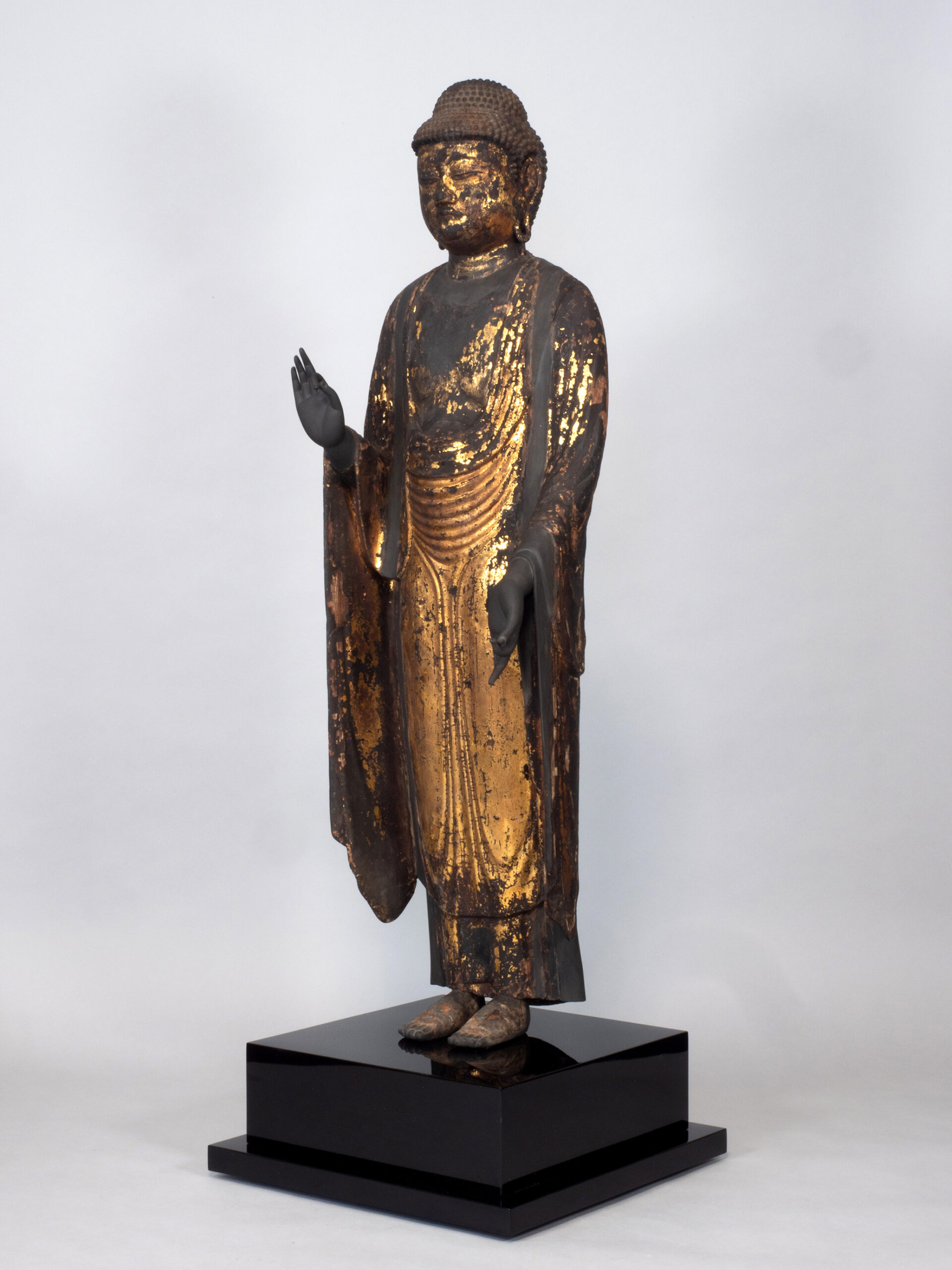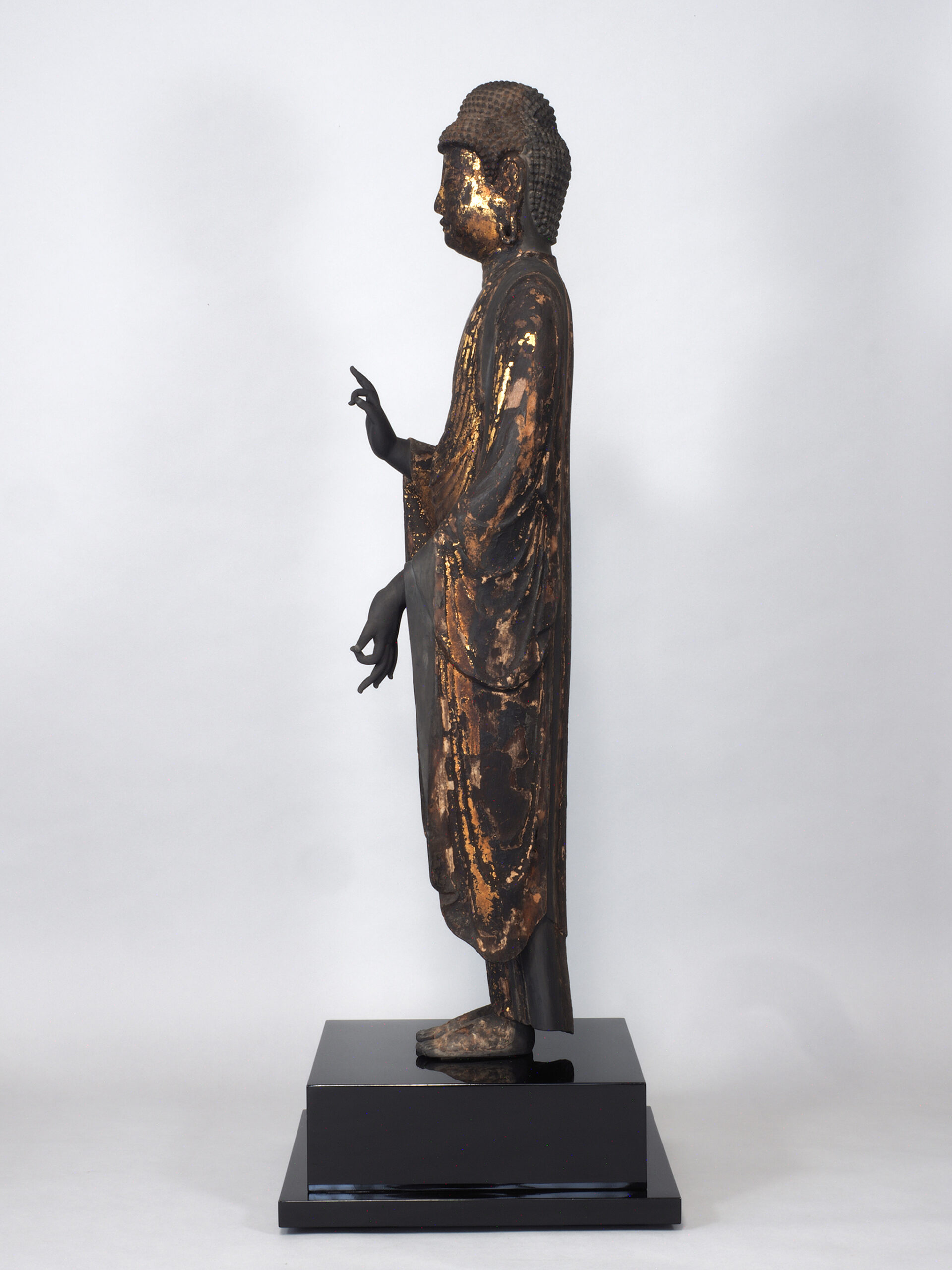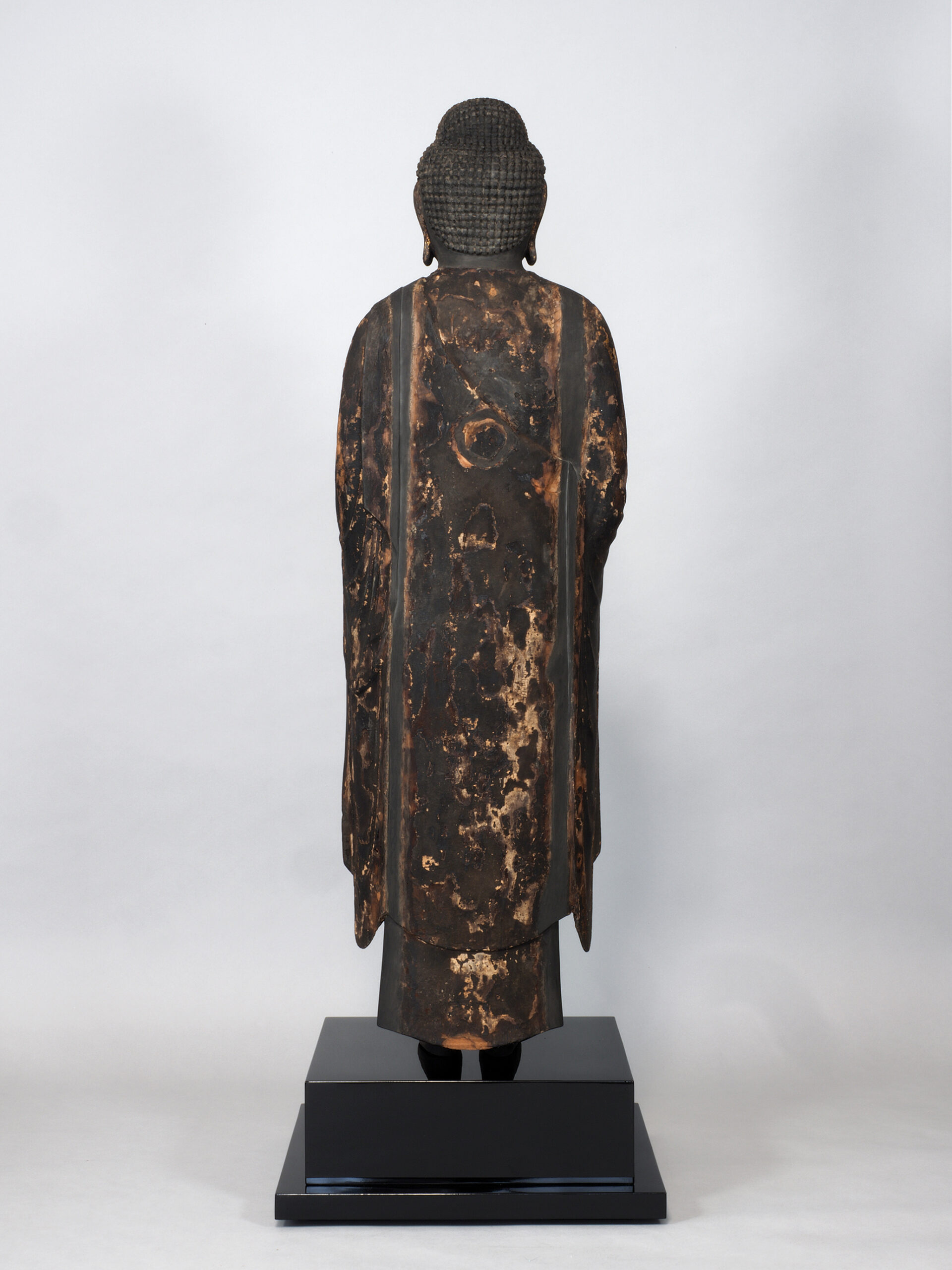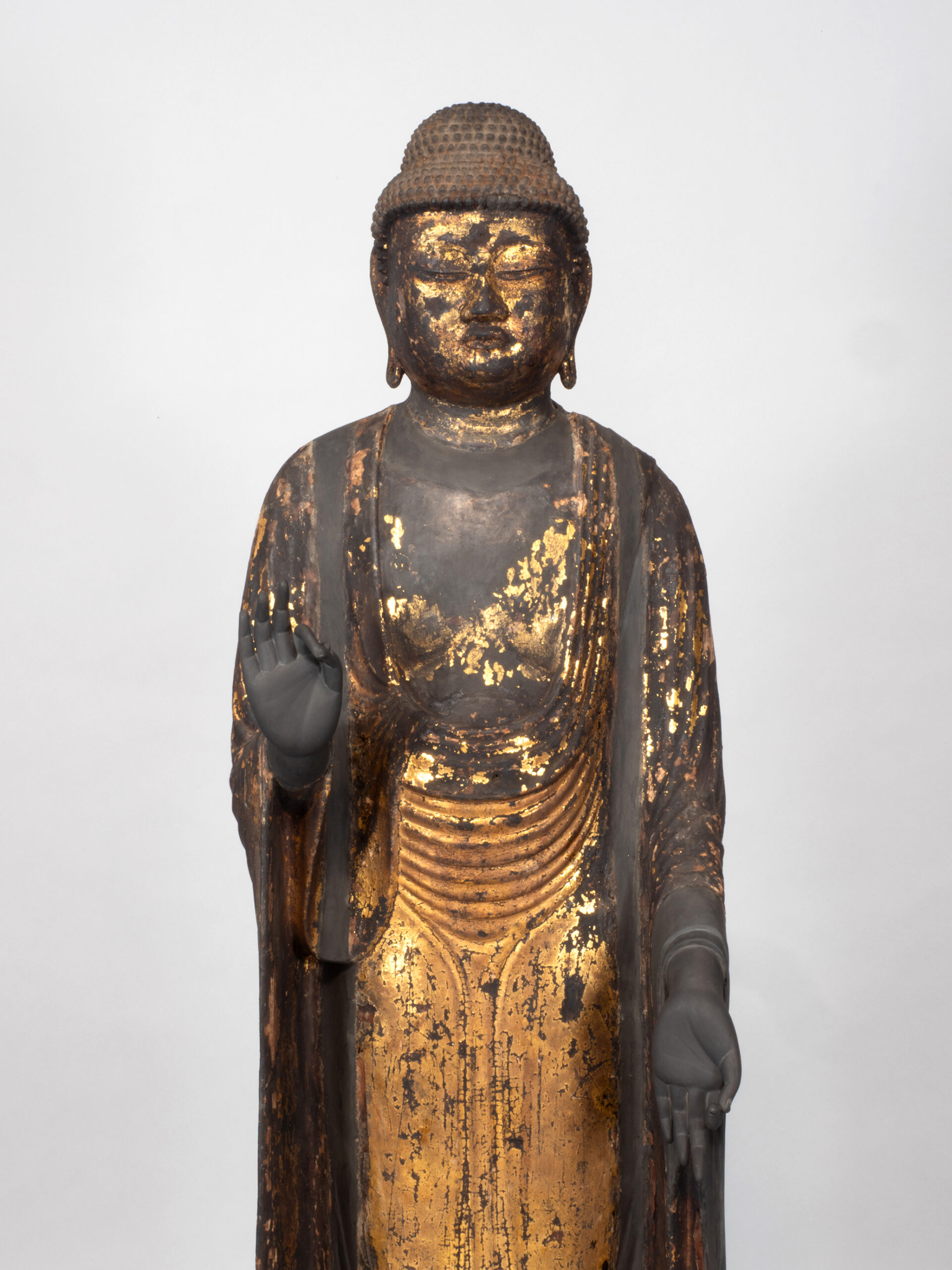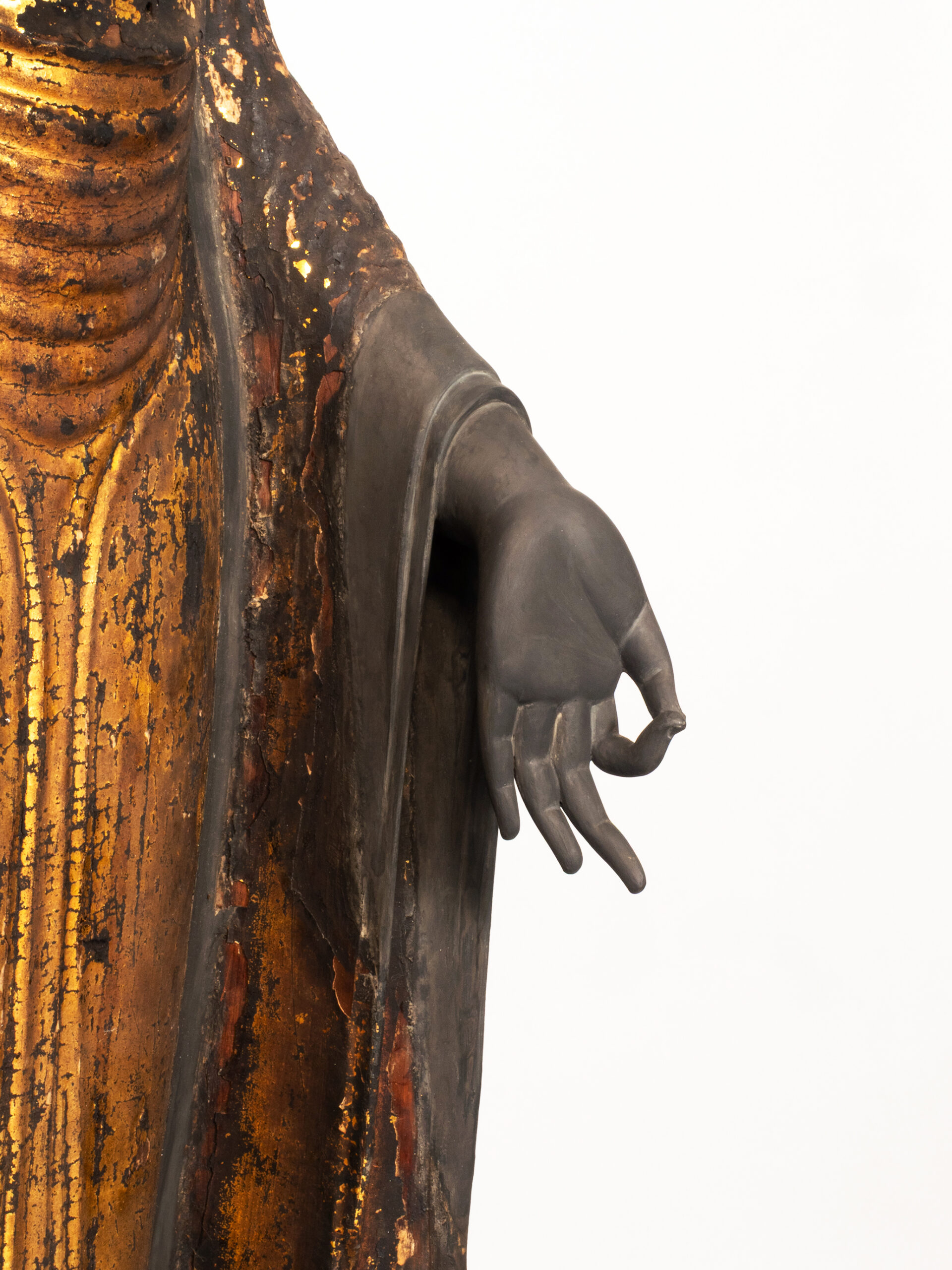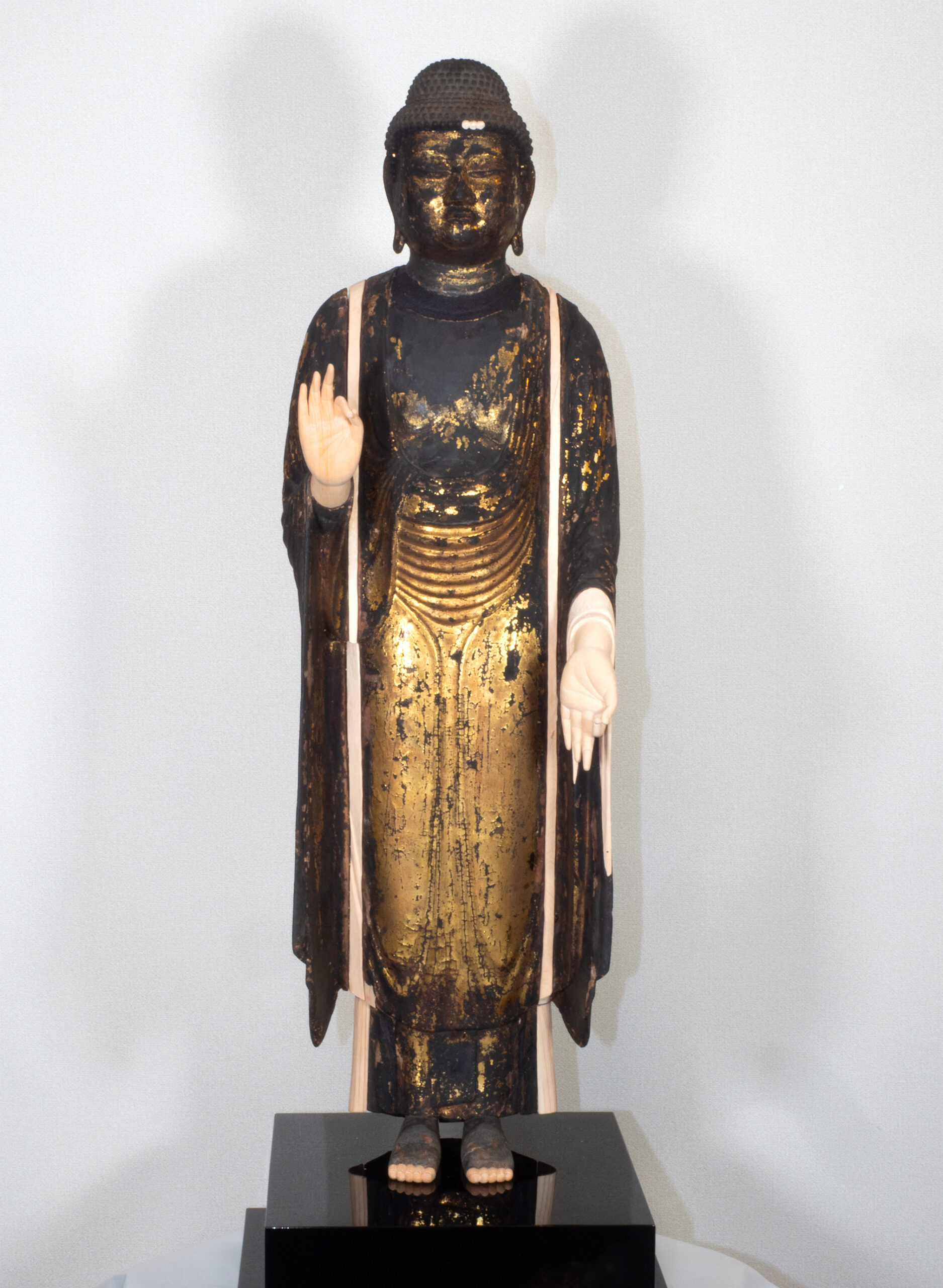The Wooden Statue of Standing Amida Nyorai (Amitābha Buddha)
The Wooden Statue of Standing Amida Nyorai (Amitābha Buddha)
2024~2025
- Name
- The Wooden Statue of Standing Amida Nyorai (Amitābha Buddha)
- Repairment Year
- 2024~2025
- Owner / Location
- Hanzomon Museum [ website ]
- Materials
- Wood
- Size
- 96.8cm
When entrusted for restoration, the statue was found in a dismantled condition. Careful examination of each component revealed numerous later interventions such as traces of repairs that testified to the devotion with which the work had been preserved across generations, even as its overall state had regrettably declined.
On stylistic grounds, the sculpture can be attributed to the late Heian period, in the latter half of the 12th century. While the original hands, once joined in the raigō-in (welcoming mudrā), had been replaced in subsequent centuries, it remains highly probable that the piece was conceived from the outset as an image of Amida. Other sections, including the back of the head, the tip of the left sleeve, the feet, and the pedestal, were likewise later substitutions or reused elements.
Restoration commenced with the consolidation of severely detached layers of lacquer and gilding. Over the centuries, these layers had lifted and warped, but through careful, repeated reapplication, they were successfully secured once more to the statue’s surface. Cleaning further revealed remnants of gold leaf beneath accumulated grime.
Later-added replacement components were removed and preserved separately. Under the guidance of Director Tsutomu Yamamoto of the Hanzomon Museum, new elements were crafted to harmonize with the statue’s overall late Heian-period form. To clearly differentiate these modern additions from the original, they were finished in plain black, without any artificially aged patina.
The restored Amida statue was unveiled for the first time at the Hanzomon Museum in the special exhibition “Amitābha Buddha: Resides, Guides, and Manifests” (opening September 13, 2025). After more than 800 years, the figure may now be venerated in a stable and enduring form, offering those involved in its restoration a profound sense of fulfillment.

